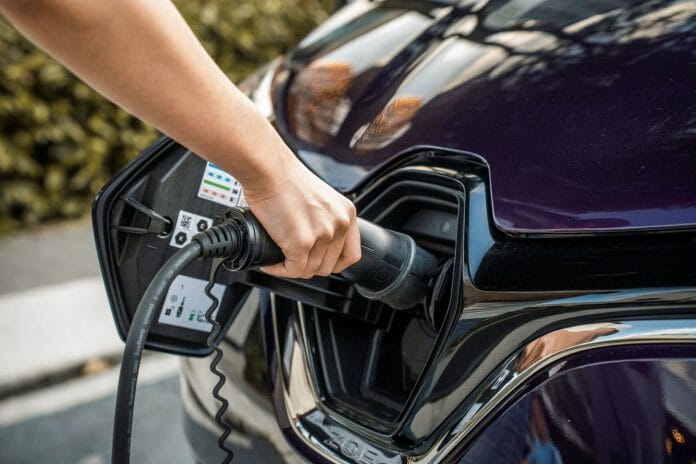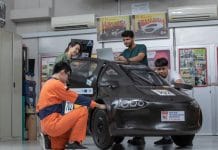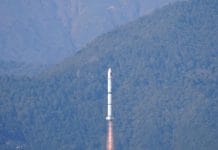The Global EV Outlook 2023 report by the International Energy Agency (IEA) has assessed the likely growth in EVs under three different scenarios, the:
– Stated Policies Scenario (STEPS), which reflects existing policies and measures, as well as firm policy ambitions and objectives that have been legislated by governments around the world;
ii. Announced Pledges Scenario (APS) that assumes all announced ambitions and targets made by governments globally are met in full and on time;
iii. Net Zero Emissions by 2050 Scenario (NZE), which is a normative outline that sets out a narrow but achievable pathway for the global energy sector to achieve net zero CO2 emissions by 2050.
In STEPS, the entire fleet of EVs (excluding 2- and 3-wheelers) increases from c.30m in 2022 to roughly 240m in 2030, averaging a c.30% annual growth. In this case, by 2030, more than 10% of all road vehicles will be EVs. In 2025 and 2030, total EV sales will exceed 20m and 40m, accounting for over 20% and 30% of all vehicle sales, RHB IB stated in its Regional Thematic Research release today (Dec 5).
The worldwide EV fleet reaches about 250m in 2030 under the APS. Due to the APS’ close to 35% average yearly growth rate, one in every seven vehicles on the road by 2030 will be an EV. In 2030, EV sales will total 45m, accounting for more than 35% of all vehicle sales.
Under the NZE, the fleet of EVs increases more quickly, at an average annual rate of nearly 40%, reaching 380m EVs on the road in 2030. In 2025, there will be more than 30m EV sales and, by 2030, there will be more than 70m or c.30% and c.60% of all vehicle sales.
The EV supply chain consists of the mining and refining of raw materials as well as the manufacturing processes that produce batteries and other components for EVs. The standard internal combustion engine (ICE) vehicle supply chain differs somewhat from the EV one. While EVs have simpler mechanical designs and fewer parts, mass production is more difficult because of the technologies involved. The battery is the most expensive part of the EV and accounts for 30-40% of its overall worth.
It is also worth noting that, whether it is STEPS or APS, the top 3 markets contributing towards the highest EV sales in 2030 will be China, Europe, and the US. However, the regions supplying the key components for EVs today are still highly concentrated.
RHB quoted the report citing this with the exception of Australia, Indonesia, and the Democratic Republic of Congo – which account for the largest proportion of lithium, nickel, and cobalt mining respectively – China dominates the entire downstream EV battery supply chain.
The Global EV Outlook 2023 report notes that, while the supply chain for EVs is growing, manufacturing is still mostly regional, with China dominating trade in battery and EV parts.
In 2022, the East Asian nation produced 35% of the exported EVs, up from 25% in 2021.
Europe is China’s main trading partner for both batteries and electric cars. The percentage of EVs built in the East Asian nation sold in the European market increased from around 11% in 2021 to 16% in 2022.
EV supply chains are increasingly at the forefront of EV-related policymaking
In order to cater to this estimated rapid growth in EV production, and increase the ability to manufacture EVs regionally, it is important to ensure that the supply chain is well distributed worldwide and not reliant solely on the current concentrated global supply network.
More importantly, given the importance that a battery plays in an EV vehicle, the global automotive sector would prefer to have a flourishing battery supply chain. A regional supply base over a concentrated global supply one will, in our view, also help in lowering transportation emissions between the supply chain’s nodes – this is particularly important for an industry such as the EV one, which prides itself on sustainability.
As per the Global EV Outlook 2023 report, the following are some of the noteworthy initiatives launched globally to make sure that resilience is built into the EV supply chain through diversification:
i. The Net Zero Industry Act – proposed by the EU in Mar 2023 – aims for nearly 90% of the political and economic union’s annual battery demand to be met by EU battery manufacturers (with a manufacturing capacity of at least 550GWh in 2030);
ii. Similarly, India aims to boost the domestic manufacturing of EVs and batteries through Production Linked Incentive or PLI schemes;
iii. The US’ Inflation Reduction Act (IRA) emphasises the strengthening of domestic supply chains for EVs, EV batteries, and battery minerals. It also lays out the criteria to qualify for clean vehicle tax credits.
As a result, between Aug 2022 and Mar 2023, major EV and battery makers announced cumulative post-IRA investments of at least USD52bn in North American EV supply chains – of which 50% were for battery manufacturing and c.20% each for battery components and EV manufacturing.
Within the battery supply chain, the availability and supply of lithium, nickel, and cobalt, present the most trouble to manufacturers looking to diversify their sourcing base.
Production of EVs is going to be the key demand driver for lithium by 2030. This is largely because it is estimated that, on average, the lithium-ion battery packs found in EVs contain about 9kg of lithium, thousands of times more than most consumer electronics.
While there is adequate lithium in the ground, miners have been unable to scale supply as rapidly.
Depending on the method of extraction, bringing new capacity online can take 3-5 years or more.
The world’s supplies of nickel are more widely dispersed. Besides Indonesia, supplies may be found in North America, Finland, Russia, Australia, and China. However, the process of refining nickel is less expensive in Asia. Since China has the majority of the world’s nickel refining capability, Western businesses may refine raw materials there for less money.
The Democratic Republic of the Congo is home to the majority of the world’s cobalt reserves.
In an effort to reduce the inherent risk associated with procuring cobalt, battery makers have been able to employ proportionately more nickel and lithium and less cobalt in newer generations of batteries.
Asia and especially ASEAN’s importance in the future of the EV supply chain
On the demand side, Asia offers a large opportunity for growth in EV adoption. In Asian countries, consumers are adopting EVs at different paces. Compared with mature markets such as China and Japan, emerging Asia – particularly India and ASEAN – is lagging.
In Asia, governments show different levels of commitment towards electrification. China, Japan, and South Korea have established comprehensive policy frameworks to support adoption. In emerging Asia, Thailand has set out its EV production policy, which aims to reach 30% of domestic vehicle production by 2030.
The Indonesian Government is eyeing to gradually stop all sales of fossil fuel vehicles by 2040 and halt sales of fuel powered motorcycles, cars, and diesel-engine vehicles starting 2050. Singapore has set an ambitious goal to sell only EVs after 2030 and phase out all ICE vehicles by 2040. Malaysia has a target of having EVs, including hybrids, account for 15% of total industry volume by 2030.
Emerging Asia markets represent the largest micro mobility opportunity. India, for example, overtook China to become the largest market for 2-wheelers or 2Ws in 2017. With the increasing cost-competitiveness of electric models and regulators incentivising consumer adoption, electric 2Ws (E2Ws) will become a predominant mode of transport in the region.
McKinsey’s modelling shows that, by 2030, India and Indonesia will become the second and third-largest E2W markets in the world after China, growing at more than 60% annually. Such development will translate into an electrification rate of 2Ws at around 36% in India and ASEAN by 2030 vs less than 1% today.
On the supply side, ASEAN member states are taking notable steps to establish their domestic industries as an essential part of the EV ecosystem. They are doing so by developing materials that support supply chain resilience and implementing economic policies to facilitate domestic adoption.
As the world may look to diversify away from its dependence on China for its EV supply chain needs – given the low cost of operations and the large availability of minerals – we believe the EV supply chain will remain heavily entrenched in Asia.
South-East Asia offers an attractive alternative in becoming a major hub for supply for key EV components. As seen in Figure 7, within ASEAN, Indonesia, Thailand, and Vietnam are gaining prominence in the evolving global EV landscape.
Within Asia, as per DIGITIMES’ research reports, ASEAN and India will become central hubs for EV production through 2030, with Thailand, Indonesia, and India leading the way in terms of growth:
i. India is now the world’s most populous country. The EV market there will grow from USD3.2bn in 2022 to USD114bn in 2029, according to Fortune;
ii. Taiwan is the epicentre of global semiconductor manufacturing and will become even more important to automakers;
iii. Indonesia has abundant mineral resources for EV battery production and will become ASEAN’s battery manufacturing centre;
iv. Thailand is expected to become the most important EV production hub among the 10 countries in ASEAN. In fact, some already refer Thailand as the “Detroit of the East”;
v. Vietnam has become a prime beneficiary of the China Plus One strategy, as auto industry companies expand beyond the East Asian giant to avoid the consequences of China’s worsening trade relations with Western countries.
McKinsey expects that, in emerging Asia, production of electric 4-wheelers (E4Ws) – which include battery EVs (BEVs), plug-in hybrid EVs (PHEVs), and fuel cell EVs (FCEVs) – will pick up rapidly. Thailand and Indonesia are already major regional automotive production hubs and McKinsey believes E4W production will scale rapidly from low levels to a significant share in these markets – growing at a combined 45%.
Together, countries within emerging Asia could produce more than 2m E4W units annually by 2030.









